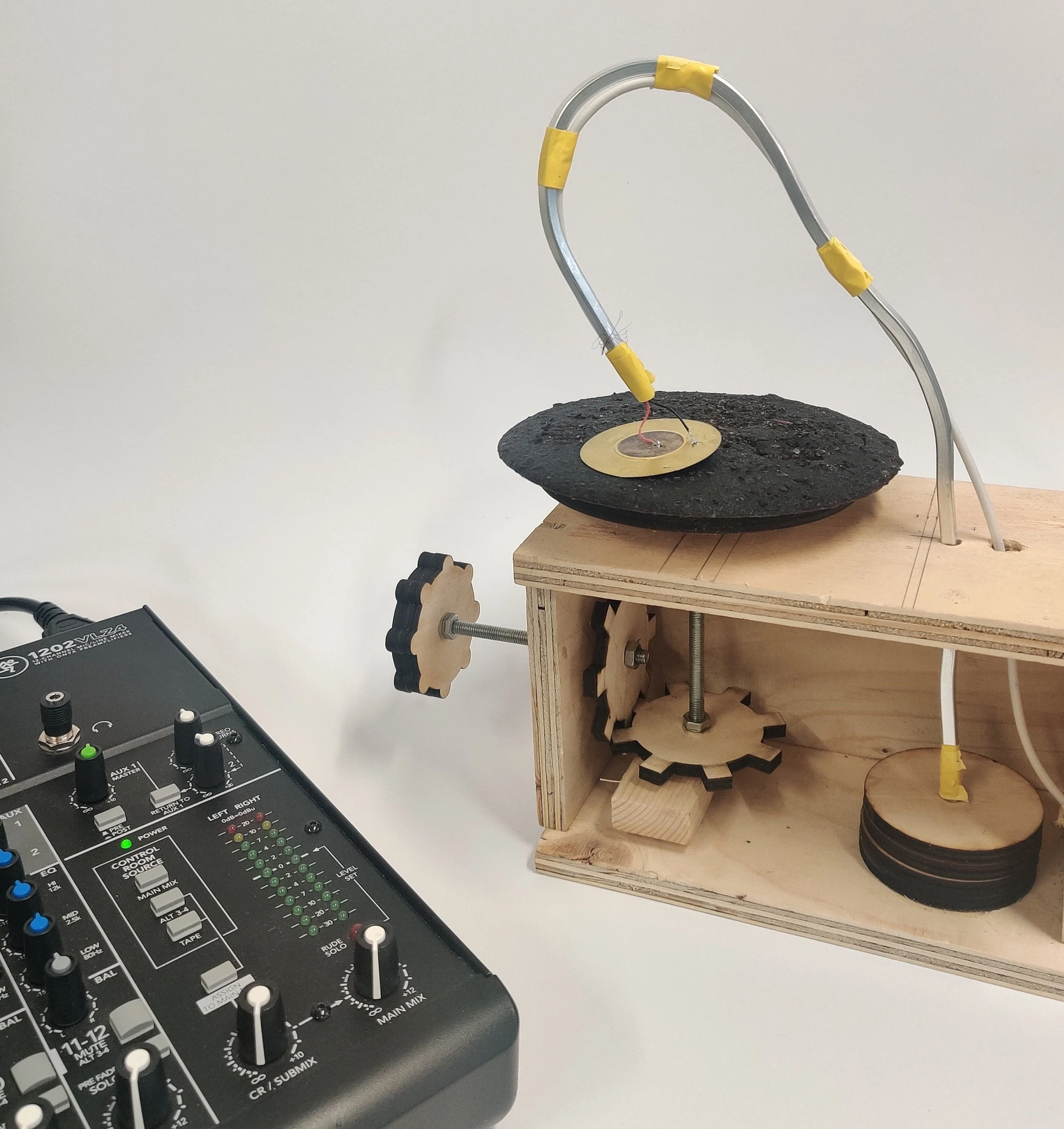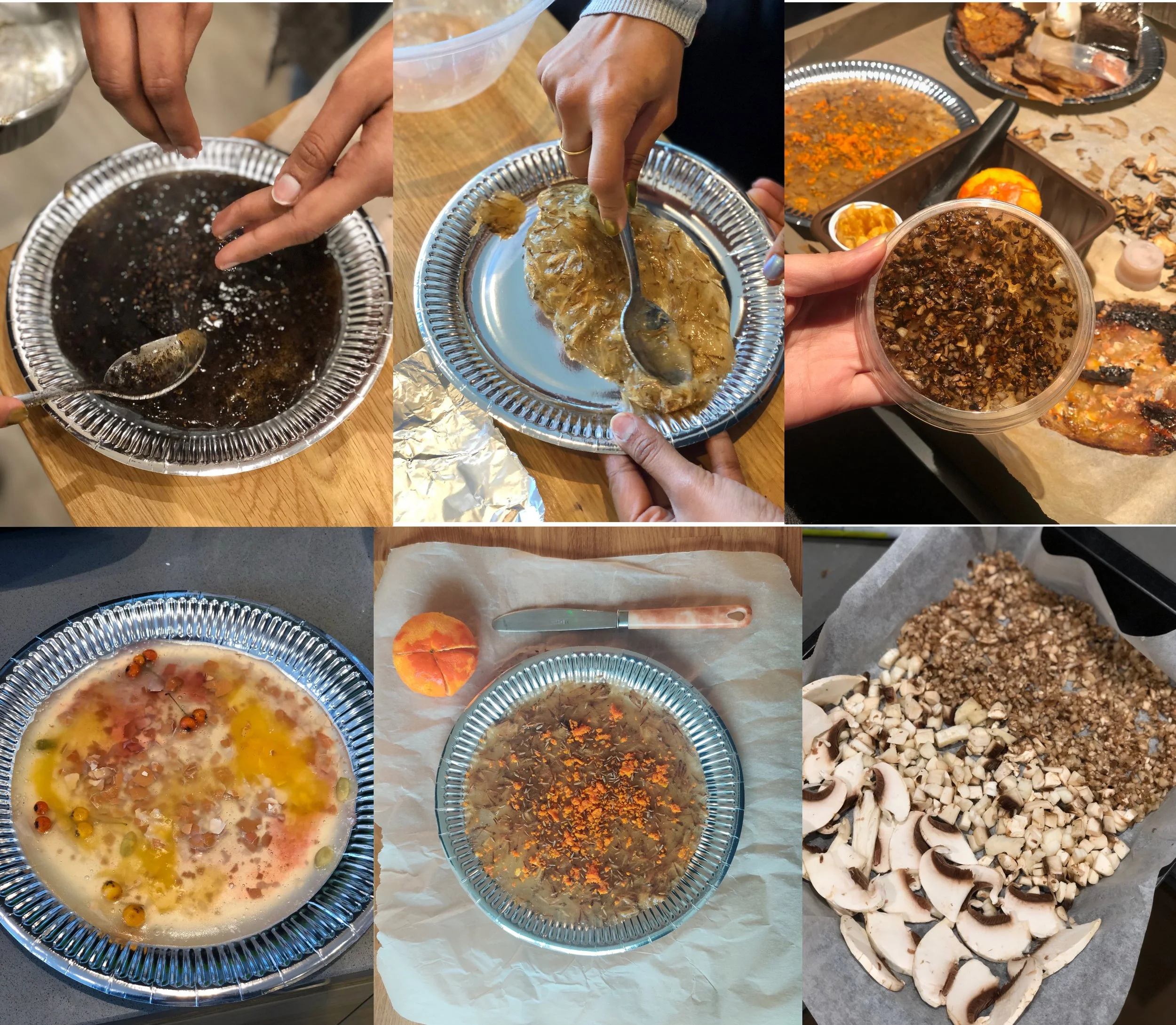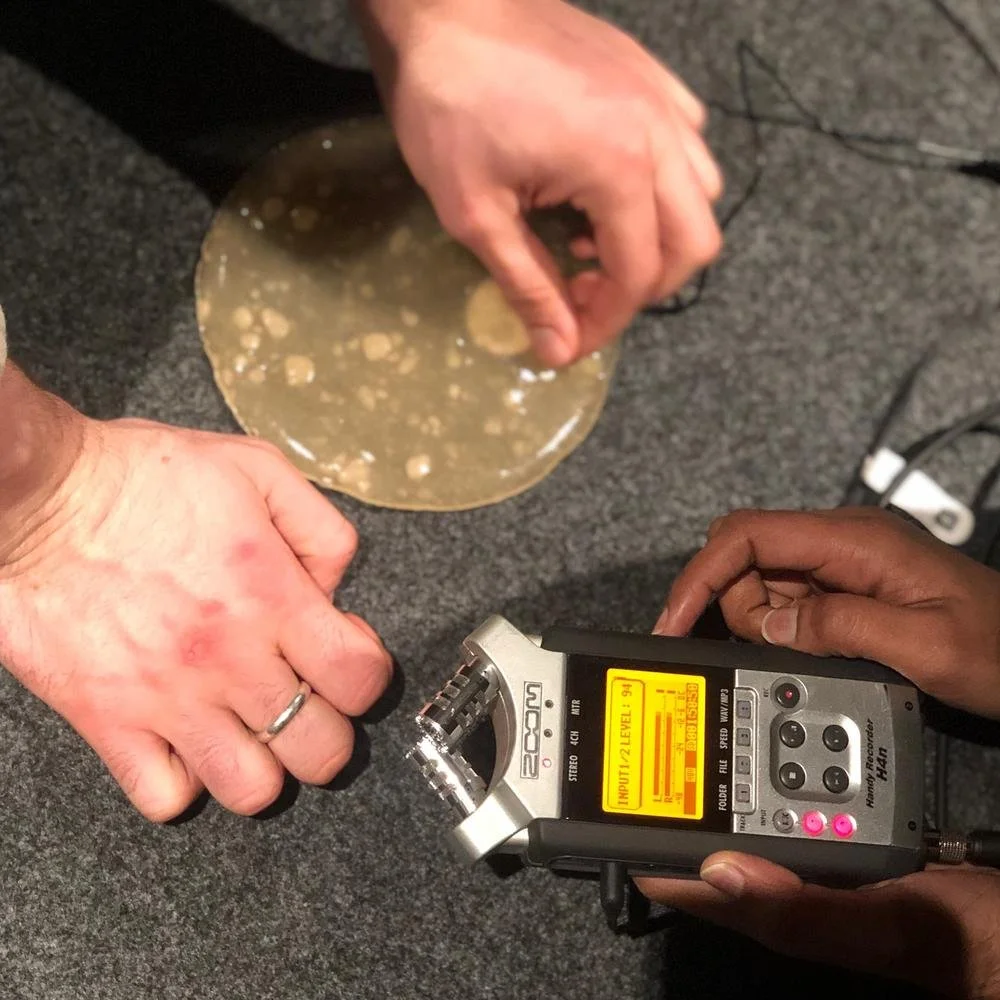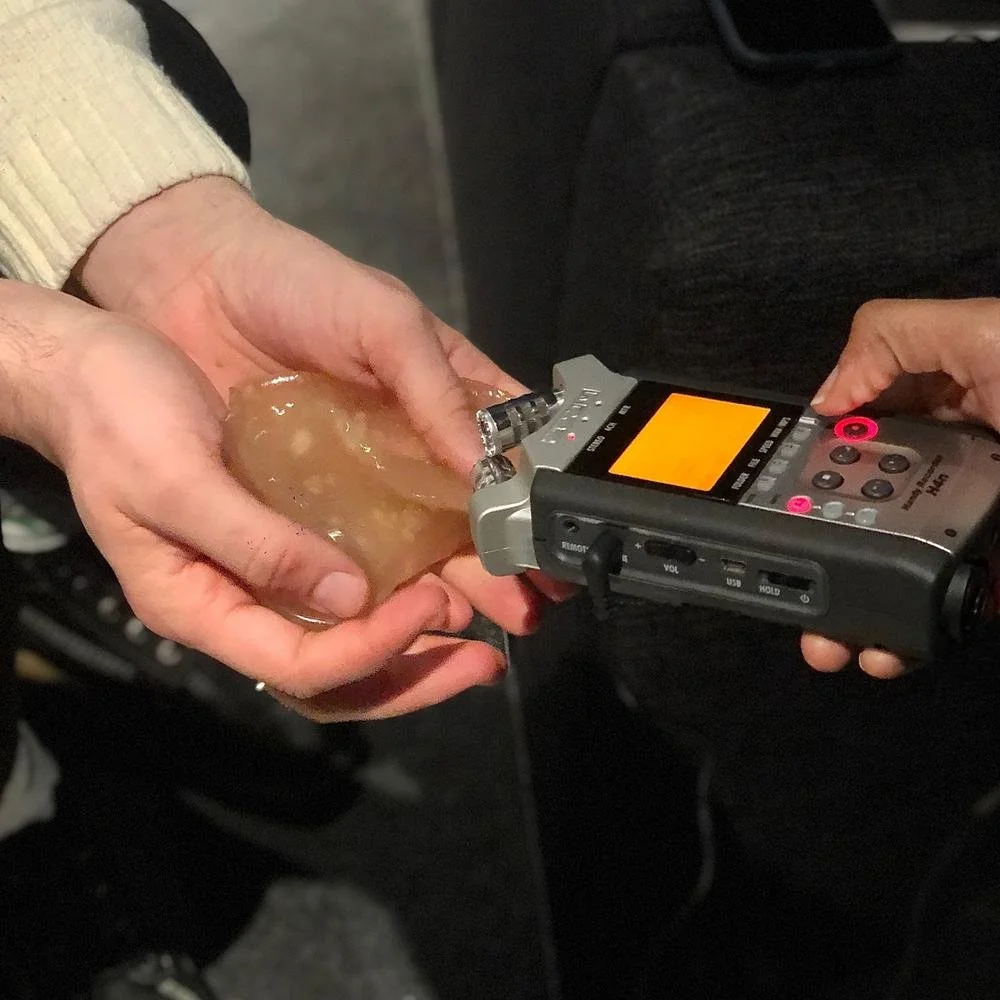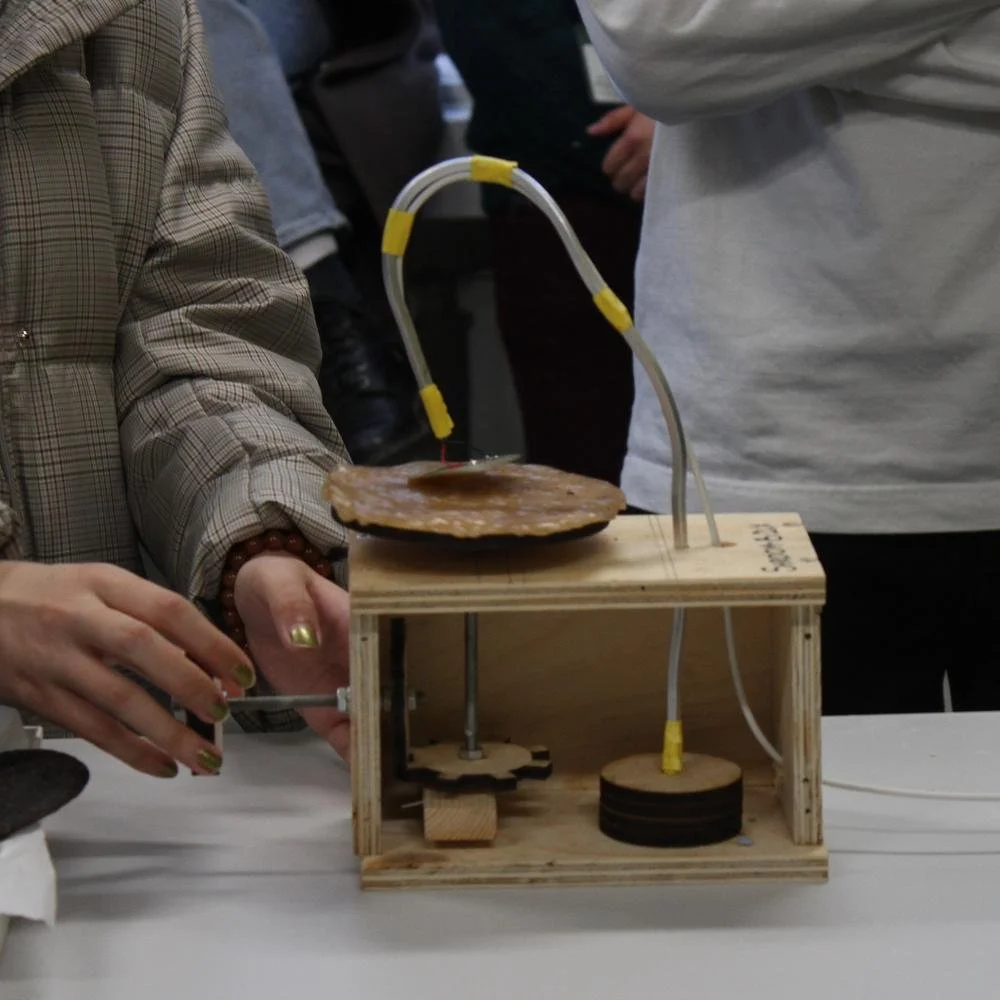Bio Symphonies
How might we design a bio-material instrument and play it together?
Introduction
Imagine merging life sciences and design to produce music. That’s precisely the journey we embarked upon, guided by two amazing minds: Anoushka Cole, an expert in biomaterials, and Ronnie Deele, a maven in sound production. They ushered us into an enthralling world where we learned to capture microsounds using advanced recording equipment and to manipulate biomaterials in ways we'd never imagined.
Creating the vinyl records using organic bio material
-
Armed with recipes from Anoushka, we ventured into exploring biomaterials like agar, gelatine, alginate, and carrageenan. Our sonic experiments involved these mediums interacting with elements like heat, water, and cold. Adding a touch of creativity, we also introduced fruits, leaves, and coffee to these concoctions.
A day later, anticipation was replaced with surprise. The sounds weren't as expected. The biomaterial primarily interacted with the recording equipment, or when provoked with actions like tapping or scratching.
-
The unexpected outcomes led us to research the intriguing field of biodata sonification—a technology that translates the microcurrent changes in biomaterials into music. Our initial vision was to construct a LOFI synthesizer. But, after a reality check from Ronnie, we realized that it would only record the synthesizer's sound, not the authentic sound of the biomaterial.
This quest brought us to the doorstep of Noah Kalos, a unique blend of a mycologist and musician. He envisions his work as a symphony between humans, mushrooms, and machinery. Inspired, we ventured into using mushrooms, discovering that the combination of mushrooms and coffee led to various biomaterial consistencies, each producing a distinct sound. The challenge that stood tall in front of us was crafting an instrument capable of producing these sounds.
-
Drawing inspiration from vinyl records, we birthed discs from these biomaterials. Jacob, a brilliant mind in our team, crafted the 'Shroombox' at LCC's workshop. Designed intricately, a contact microphone would play the disc's surface, creating distinct sounds.
However, the mushroom disc interacting with the microphone resulted in an unexpectedly metallic resonance, raising concerns about its musicality. Our industry partners enlightened us—sounds don't always need to be conventionally musical. They can still hold their own in a symphony.
Reflections
This experiment was more than just an academic endeavour. It pushed us into the interwoven world of technology, biology, design, and music. The marriage of these disciplines not only hints at future innovations but also resonates with ancient practices across cultures. It's a testament to the power of merging old and new and the boundless creativity that ensues.
Squad: Bipasha Ray, Jacob Thomas, Jinqi Han, Malavika Mahajan, Mu Lin

